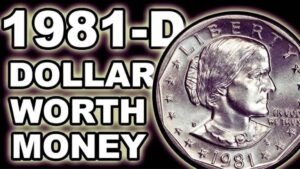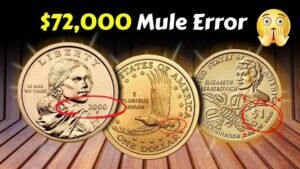Imagine handing over a simple $2 bill for snacks at a gas station, only for the clerk to discover it’s not just money — it’s a hidden fortune. That’s exactly what happened when one worker stumbled upon a bill so rare it could fetch $12 million at auction. Could your wallet be hiding the same treasure?
What Makes This $2 Bill So Special?
Not all $2 bills are created equal. Most are worth just their face value, but certain rare printings, misprints, or historical series can turn them into collector’s gold. The one discovered at the gas station wasn’t ordinary — it had a unique serial number, limited print run, and pristine condition that sent its value skyrocketing.
The Surprising History of the $2 Bill
The $2 bill first appeared in 1862, featuring Thomas Jefferson. Over the years, it’s been discontinued, redesigned, and even called “unlucky.” Its low circulation led many to believe it was no longer produced, but the truth is: it still exists, just in smaller quantities. Rare errors and early prints, however, are where the real money lies.
Key $2 Bill Issues and Rarity
| Series Year | Notable Feature | Collector Value |
|---|---|---|
| 1862 | First $2 note | $500 – $5,000 |
| 1928 | Red Seal Notes | $50 – $1,000+ |
| 1976 | Bicentennial | $2 – $100 |
| Rare Errors | Inverted Seals | $5,000 – $12M |
Why This Discovery Is Worth Millions
The gas station worker’s find wasn’t just rare — it was extraordinary. A combination of historical importance, flawless condition, and printing errors placed it in a category of near-mythical collectibles. Auctioneers estimate its value at up to $12,000,000, making it one of the most valuable small-denomination bills ever found.
How You Can Spot a Valuable $2 Bill
- Check the Serial Number — Low, repeating, or star notes are prized.
- Look at the Seal Color — Red seals or unusual misprints raise value.
- Inspect the Condition — Crisp, uncirculated bills are worth much more.
- Verify the Series Year — Older issues and special releases are collector favorites.
Common vs. Rare $2 Bills
| Type of $2 Bill | Typical Value | Potential Value |
|---|---|---|
| Standard (Modern) | $2 | $2 – $10 |
| 1976 Bicentennial | $2 | $50 – $100 |
| Red Seal (1928-1963) | $2 | $50 – $1,000+ |
| Error / Rare Print | $2 | $5,000 – $12M |
Fascinating Facts About the $2 Bill
- Fewer than 1% of all U.S. currency in circulation is $2 bills.
- Many people believe they are no longer printed, but the U.S. Treasury still makes them.
- A rare error note once sold for $2.1 million, proving collectors will pay anything for uniqueness.
Expert Insights: How to Cash In
- Get Your Bill Authenticated — Use grading services like PCGS or PMG.
- Protect It Immediately — Place it in a currency holder to prevent damage.
- Consider Auctions — Rare currency auctions attract global buyers.
- Stay Alert — Always check your change; you never know what’s hiding in plain sight.
FAQs
Q: Are all $2 bills rare?
A: No. Most are common, but special series, seals, and misprints can make some incredibly valuable.
Q: Can I still get $2 bills at the bank?
A: Yes, though they are less circulated. You can request them, but they’ll likely be modern, not rare.
Q: What makes one worth millions?
A: A mix of condition, rarity, printing errors, and collector demand.
Conclusion: Could You Be Holding a Million-Dollar Bill?
The gas station worker’s discovery of a rare $2 bill worth $12,000,000 proves that treasure isn’t always buried — sometimes it’s slipped across a counter in plain sight. The next time you see a $2 bill, don’t dismiss it. Look closer — your spare change could hold a life-changing secret.




